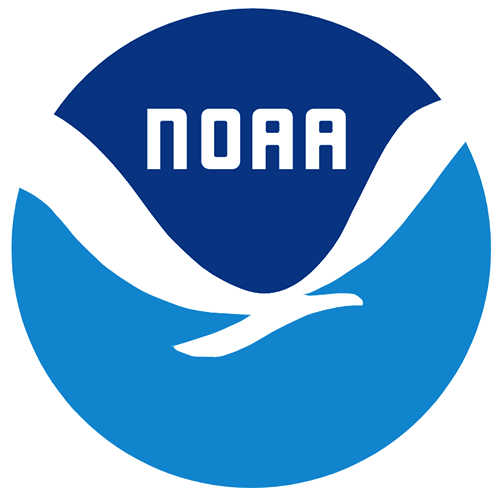2019 NOAA NGS Topobathy Lidar: Chesapeake Bay, MD
Welcome Guest ( Sign In )
NOAA
 NOAA Chesapeake Bay MD1902 and MD1903 Topobathymetric lidar data were collected by NV5 Geospatial (NV5) using a Leica Chiroptera 4x system. The MD1903 acquisition spanned from 20191109-20191115 in 5 missions. The MD1902 acquisition spanned from 20191109-20191116 in 6 missions. The datasets include topobathymetric data in LAS format 1.4, point data record format 6, with the following classifications in accordance with project specifications and the American Society for Photogrammetry and Remote Sensing (ASPRS) classification standards:
1 - unclassified
2 - ground
7 - noise
40 - bathymetric bottom or submerged topography
41 - water surface
43 - submerged feature
45 - water column
46 - overlap bathy bottom - temporally different from a separate lift
71 - unclassified associated with areas of overlap bathy bottom/temporal bathymetric differences
72 - ground associated with areas of overlap bathy bottom/temporal bathymetric differences
81 - water surface associated with areas of overlap bathy bottom/temporal bathymetric differences
85 - water column associated with areas of overlap bathy bottom/temporal bathymetric differences
1 Overlap - edge clip
1 Withheld- green sensor returns within topographic areas
42 Synthetic - synthetic water surface
These data sets also includes lidar intensity values, number of returns, return number, time, and scan angle.
The 100 m buffered NOAA Chesapeake Bay MD1902 project area covers approximately 260.195 square kilometers in an area encompassing Severn River to Rhode River near Annapolis, Maryland. LAS files were compiled in 500 m x 500 m tiles. The MD1902 dataset is comprised of 1,460 - 500 m x 500 m LAS tiles.
The 100 m buffered NOAA Chesapeake Bay MD1903 project area covers approximately 260.195 square kilometers in an area encompassing West River to Dares Beach near Annapolis, Maryland. LAS files were compiled in 500 m x 500 m tiles. The MD1903 dataset is comprised of 1,569 - 500 m x 500 m LAS tiles.
This data set is an LAZ (compressed LAS) format file containing LIDAR point cloud data.
NOAA Chesapeake Bay MD1902 and MD1903 Topobathymetric lidar data were collected by NV5 Geospatial (NV5) using a Leica Chiroptera 4x system. The MD1903 acquisition spanned from 20191109-20191115 in 5 missions. The MD1902 acquisition spanned from 20191109-20191116 in 6 missions. The datasets include topobathymetric data in LAS format 1.4, point data record format 6, with the following classifications in accordance with project specifications and the American Society for Photogrammetry and Remote Sensing (ASPRS) classification standards:
1 - unclassified
2 - ground
7 - noise
40 - bathymetric bottom or submerged topography
41 - water surface
43 - submerged feature
45 - water column
46 - overlap bathy bottom - temporally different from a separate lift
71 - unclassified associated with areas of overlap bathy bottom/temporal bathymetric differences
72 - ground associated with areas of overlap bathy bottom/temporal bathymetric differences
81 - water surface associated with areas of overlap bathy bottom/temporal bathymetric differences
85 - water column associated with areas of overlap bathy bottom/temporal bathymetric differences
1 Overlap - edge clip
1 Withheld- green sensor returns within topographic areas
42 Synthetic - synthetic water surface
These data sets also includes lidar intensity values, number of returns, return number, time, and scan angle.
The 100 m buffered NOAA Chesapeake Bay MD1902 project area covers approximately 260.195 square kilometers in an area encompassing Severn River to Rhode River near Annapolis, Maryland. LAS files were compiled in 500 m x 500 m tiles. The MD1902 dataset is comprised of 1,460 - 500 m x 500 m LAS tiles.
The 100 m buffered NOAA Chesapeake Bay MD1903 project area covers approximately 260.195 square kilometers in an area encompassing West River to Dares Beach near Annapolis, Maryland. LAS files were compiled in 500 m x 500 m tiles. The MD1903 dataset is comprised of 1,569 - 500 m x 500 m LAS tiles.
This data set is an LAZ (compressed LAS) format file containing LIDAR point cloud data.
